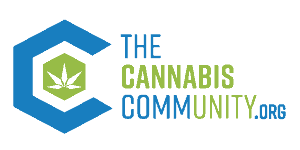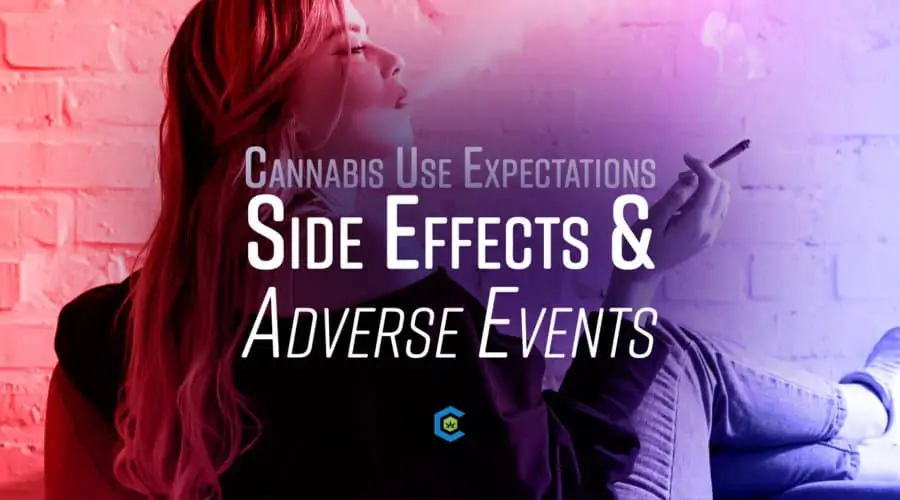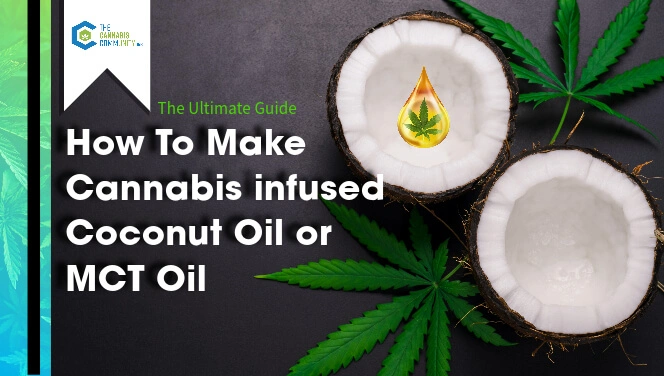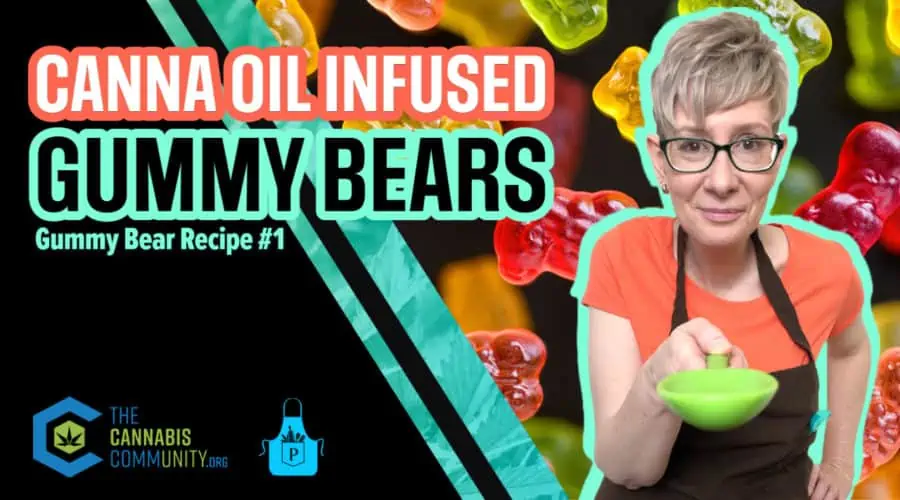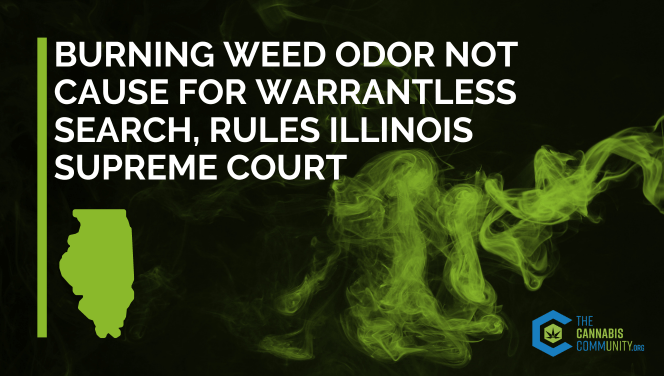Cannabis Side Effects: Here’s What You Need to Know
Table of Contents
Cannabis Has Limitations, As Any Drug Does, Mainly its Side Effects
As medical cannabis use continues to grow more widespread across the United States and the world at large, so is the realization that as beneficial as it is, cannabis is no “silver bullet.” Despite its clinical versatility and efficacy, cannabis and cannabinoid therapy have limitations, a major one being side effects, just like any other drug. In the end, it is up to the healthcare professional and the patient to weigh the risks and rewards of cannabis side effects versus other forms of treatment.
When Weighing Risk vs. Reward, Consider Cannabis’ Safety Profile
However, it is important to take into consideration the wide safety profile and therapeutic index that medical cannabis has, especially relative to many other drugs (both legal and illegal).1,2 For this reason alone, this believes medical cannabis should be considered as a first-line treatment before more dangerous drugs with more narrow therapeutic indexes and higher liabilities for abuse, dependency, and addiction (i.e., opioids, benzodiazepines, and barbiturates).
What are the Most Common Side Effects of Cannabis?
Since the term “cannabis” broadly describes a virtually infinite array of different strains, genetics, and phenotypes of the C. Sativa plant, it should be noted that side effects vary depending on the type of cannabis consumed (as well as the mode of administration, the patient’s tolerance, metabolism of cannabinoids, etc.) That said, a rough sketch of cannabis’ side effect profile can be outlined using the most recent scientific data. As per a 2016 comprehensive review of side effects associated with short-term and long-term/heavy cannabis use by Volkow and colleagues, here are some short-term and long-term side effects and adverse events related to cannabis consumption:
Adverse Effects From Short Term Use of Cannabis:
- Impaired Short Term Memory
- Impaired Coordination
- Altered Judgement (Note: This is incredibly different on a physiological and pharmacological standpoint from the “disinhibition” characteristic of overconsumption of alcohol to the point of “drunkenness”)
- In High Doses, Panic Attacks, Paranoia, and Psychosis
- The author would like to note that individuals who experience “psychotic breaks” from cannabis use are often times people with mental illness–AND that people with mental illness often have a higher predilection for drug use and abuse.1 With Cannabis being the most widely used illicit drug in the world, it cannot be definitively stated (as correlation is NOT causation) that cannabis causes psychosis in some people without considering all these additional variables; indeed, the two are intertwined in the classic chicken and egg paradigm.2
- As listed in table 1 of the journal article.3
- Euphoria
- Sedation
- Appetite Stimulation
- Dry Mouth
Adverse Cannabis Side Effects From Long-Term/Heavy Use/Abuse
- While the researchers in the study use the word addiction, this author would prefer to distinguish between “addiction” and “dependency.” Long-term, heavy cannabis use has indeed been linked to some degree of physiological and psychological dependency. Some patients meet the DSM-V criteria for addiction, but not all of them do.*
- Altered Brain Development*
- Poor Outcomes in School*
- Cognitive Impairment*
* = The effect is strongly linked with initial marijuana use early in development
Concerning Data About Cannabis Use in Childhood & Adolescence
Several studies have suggested concerning links about developmental abnormalities later in life when cannabis use, especially daily/heavy use, begins at an early age before the brain is fully developed.4,5 However, in cases of childhood epilepsy, CBD-rich cannabis has shown incredible promise in high-quality trials and has even led to the approval of the first cannabis-derived FDA-approved drug, Epidiolex.6,7
Since CBD isolates (such as Epidiolex) and CBD-rich extracts are becoming a common product that is more accessible than THC, it is important to explore some of the side effects presented by CBD itself. Since cannabis has so many different active components, it is important to observe the various compounds separately as well as studying adverse effects from their polypharmacy action when patients consume whole plant extract and/or full/broad-spectrum products.
Side Effects of Cannabidiol (CBD) Specifically
A recent 2017 review investigated the side effects of cannabidiol in available clinical data as well as data available from in-vivo animal model research. The majority of clinical applications of cannabidiol are in the treatment of epilepsy and psychosis.
The most commonly reported side effects were: “tiredness, diarrhea, and changes of appetite/weight”.8 However, it is important to note that the authors of the study also reported that CBD had a much more tolerable side effect profile compared to other drugs commonly used to treat those same disorders.8
Cannabis Withdrawal (Yes, it’s a Real Thing; No, It’s Not That Bad)
While cannabis isn’t generally associated with physical dependency and withdrawal syndrome upon cessation, the phenomenon is medically documented and not a comfortable one at that.
Chronic, heavy cannabis use will inevitably cause the individual’s physiology to adapt to a constant influx of cannabinoid compounds, thus altering one’s homeostasis and current physiological equilibrium. Therefore, it is not surprising that upon abrupt cessation of cannabis, some mild withdrawal and discomfort is expected.
Most Common Withdrawal Symptom: The Inability to Sleep
One of the most commonly reported withdrawal symptoms from abrupt cannabis cessation is the inability to fall asleep.9 Other common withdrawal symptoms include lack of appetite, irritability, and mild anxiety.10
However, in comparison to the insidious and debilitating nature of opioid withdrawal or the life-threatening symptoms of alcohol or benzodiazepine dependence and detoxification are monsters to be reckoned with, causing cannabis withdrawal to pale in comparison.
The Side Effect That Saves The Day: The Miracle That is “The Munchies”
One of the earliest uses of medical cannabis was in cancer patients. Indeed, the earliest synthetic cannabinoid drugs were used in the treatment of chemotherapy-induced nausea.3–5 What is colloquially known as “the Munchies” may be a nuisance for the cannabis patient looking to avoid sugar; however, this exact side effect is the primary reason cannabis is effective in patients with severe GI issues, generally chemotherapy-induced.
Such patients have difficulty enjoying their food, keeping it down, and developing an appetite. Luckily, cannabis is perfect at making just about anyone really, really hungry; A life-saving benefit from an already wondrous plant that can benefit the metabolism!
Education Empowers Medical Cannabis Patients Optimize Treatment Goals
The best way to continue successfully integrating (or re-integrating, depending on how you look at it) cannabis into the modern medical pharm is by subjecting it to the same scrutiny and holding it to the same standards as other drugs.
While cannabis has certain unique features, such as the wide level of intra-species diversity, that limit the ability to generalize these findings to all types of cannabis and cannabis products, a general picture of what the adverse effects of cannabis looks like is available in this review.
By better preparing patients for potential side effects and educating them on proper dosing and titrations to mitigate and attenuate the intensity of these adverse effects, we can help more patients use cannabis to successfully reach their treatment goals!
If you enjoyed this article, you may be interested in…
Cannabis Basics Textbook: A Fun Evidence-Based Journey Into Cannabinoid Science Fundamentals
How Can Cannabis Help With Epilepsy?
What is Cannabis Hyperemesis Syndrome?
Get Your Medical Cannabis Card
Enjoyed This Content? Read More:
-
How to Make Cannabis-Infused Coconut Oil or MCT Oil: Crockpot Recipes
In this guide, you’ll learn how to make cannabis-infused coconut oil or MCT oil, decarboxylate cannabis, or choose to infuse cannabis into any oil of your choice.
-
How to Make THC Gummy Bears with Canna Oil
This is a great no-fail recipe for beginners. The corn syrup in this recipe will help your gummy bears have that nice and chewy texture we’ve all come to love.
-
Burning Weed Odor Not Cause for Warrantless Search, Rules Illinois Supreme Court
A Landmark Case for IL Medical Cannabis Patient Protections On September 9th, the Illinois Supreme Court issued a major victory for cannabis consumers and patients, declaring that the aroma of burnt cannabis is insufficient probable cause for a warrantless search. Illinois has long been at the forefront of the fight for plant medicine. Medical patients…
-
GMO Cookies: A Strain Review of Its Potent Aroma and Powerful Effects
GMO Cookies is a popular cannabis strain for homegrow. Here’s what you need to know to get started with these seeds.
-
Cherry Pie Cannabis Strain: A Sweet Treat with Potent Effects
Cherry Pie is a popular cannabis strain for homegrow. Here’s what you need to know to get started with these seeds.

